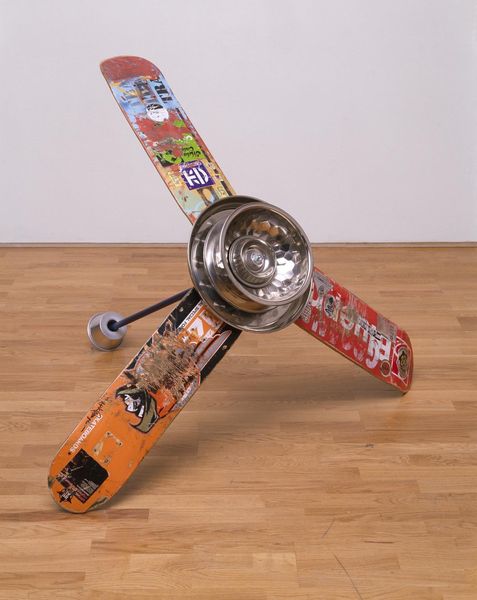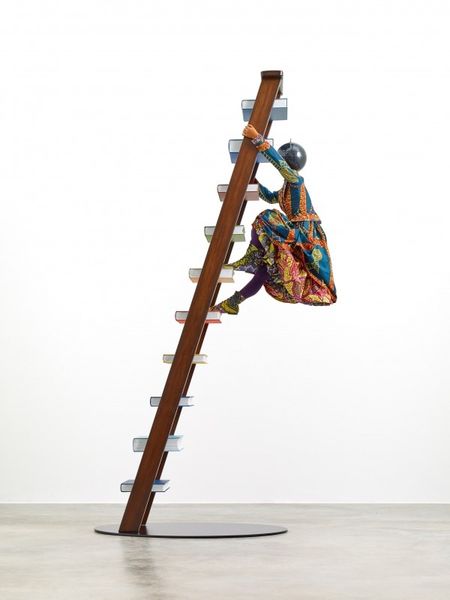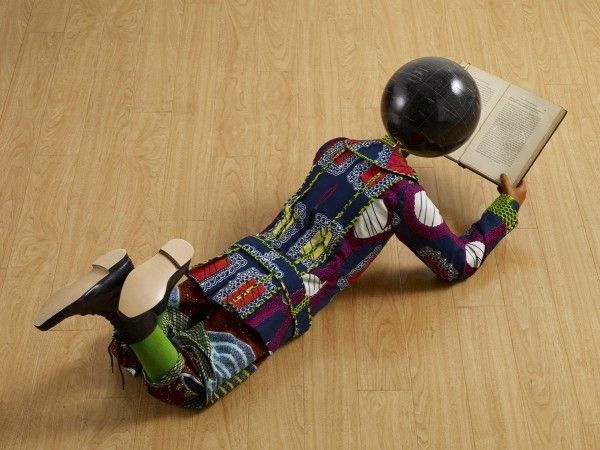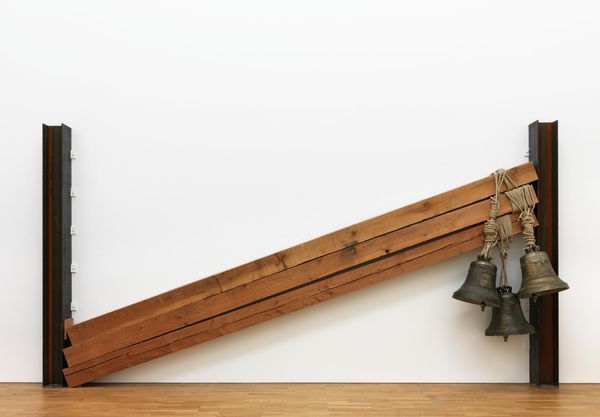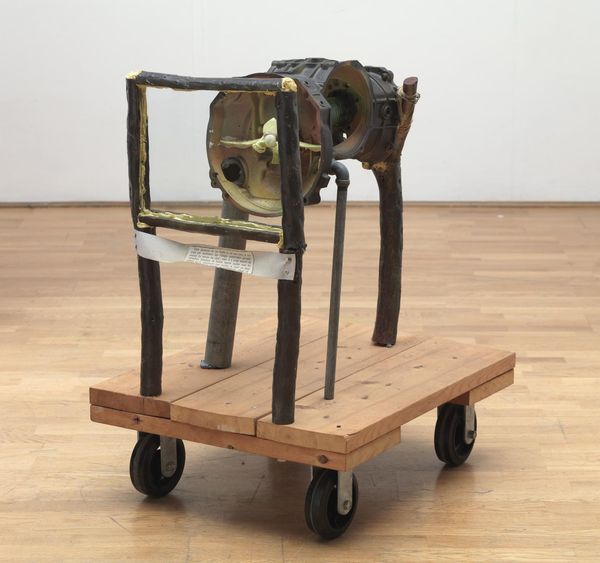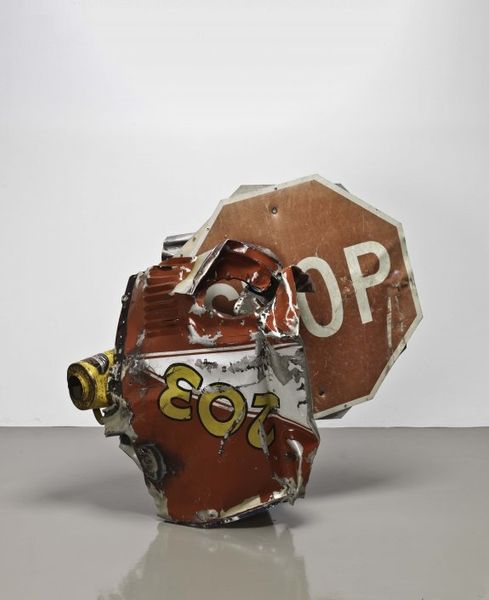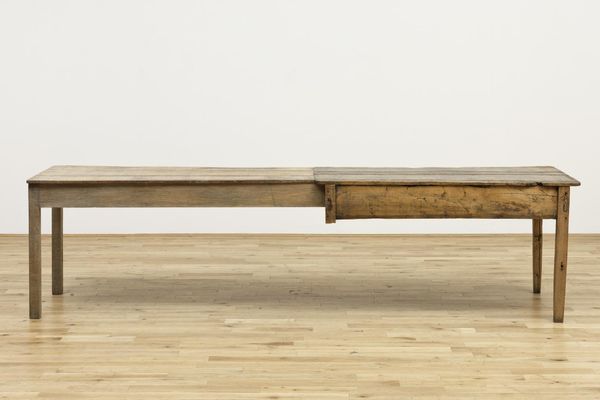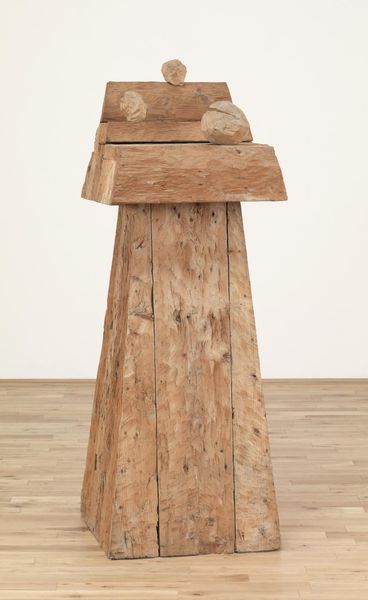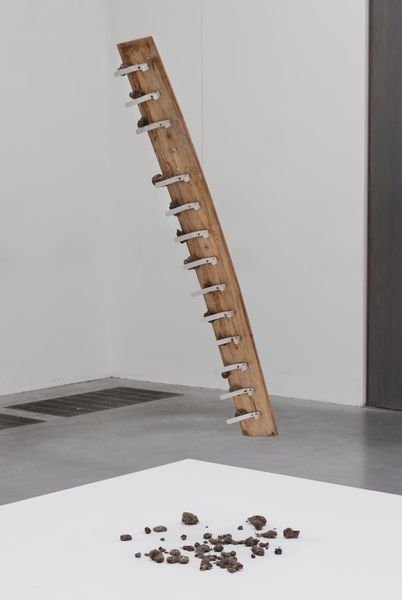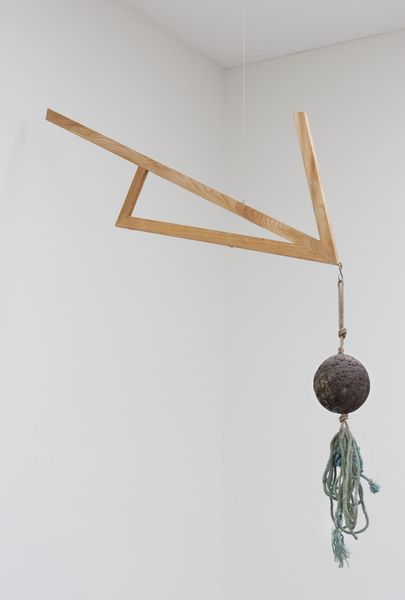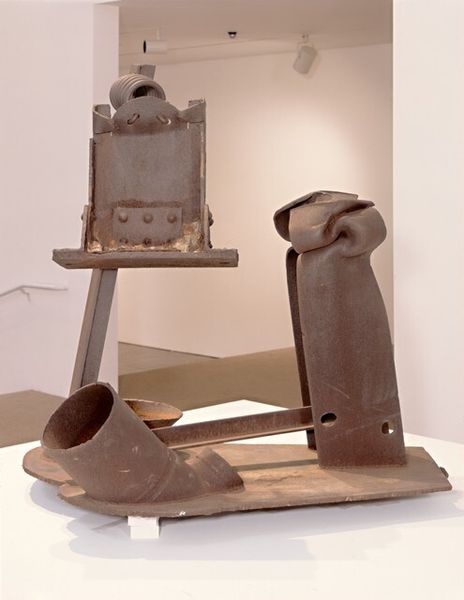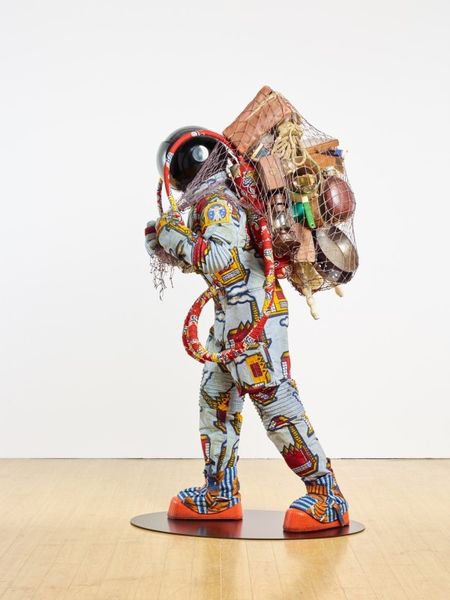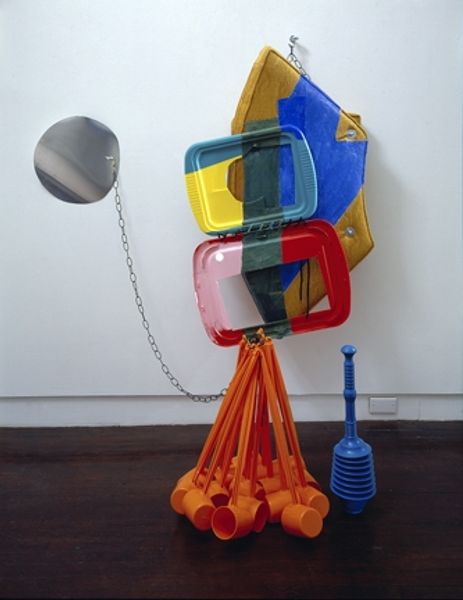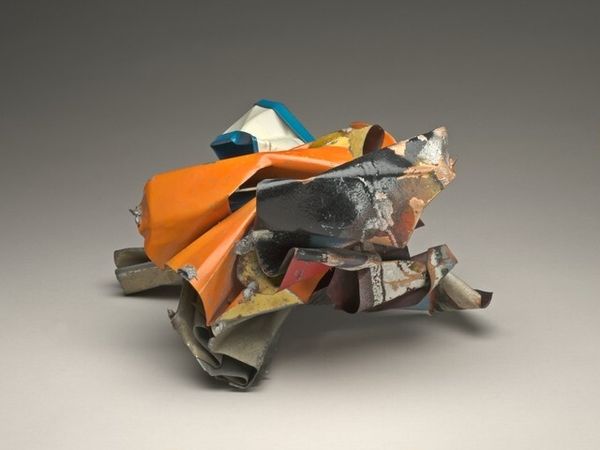
Dimensions: object: 1070 x 1460 x 1100 mm
Copyright: © Alexandre da Cunha | CC-BY-NC-ND 4.0 DEED, Photo: Tate
Curator: Here we have Alexandre da Cunha's work, "Erik Ellington (fan)." It's part of the Tate collection, and it really makes you think about the appropriation of everyday objects. Editor: Immediately, I see the repurposing of these well-worn skateboard decks – they give off such a raw, youthful energy. The metal elements add an interesting industrial contrast, don't you think? Curator: Absolutely. The fan, of course, is an object designed to provide comfort, while skateboards represent movement, rebellion, and perhaps a bit of danger. It plays into the social history of skateboarding. Editor: For me, it's about the act of making. Da Cunha highlights the inherent beauty and unexpected combinations we can create by re-examining materials otherwise deemed obsolete. Curator: And the title itself, "Erik Ellington (fan)," suggests a tribute to a skater, elevating street culture into a gallery setting and creating a dialogue between different social spheres. Editor: It reminds me that art can be discovered anywhere, in any form. The piece is really a clever comment on consumerism and the endless potential for repurposing the objects around us. Curator: I agree; it seems Da Cunha asks us to look beyond the typical roles assigned to objects and appreciate their inherent potential. Editor: A good reminder to stay curious about the possibilities embedded in the ordinary.
Comments
tate 7 months ago
⋮
http://www.tate.org.uk/art/artworks/cunha-erik-ellington-fan-t12174
Join the conversation
Join millions of artists and users on Artera today and experience the ultimate creative platform.
tate 7 months ago
⋮
Erik Ellington (fan) 2004 is a floor-based sculpture by the British-Brazilian artist Alexandre da Cunha that comprises three skateboards with their wheels removed arranged in a three-armed configuration to resemble a domestic ceiling fan. At the centre of the work, eight lightweight metal objects – an ash tray, two cake moulds, the bottom of a cake tin, two round baking trays, a salad bowl and a circular lid – are threaded onto a plastic-covered metal broom handle using a series of wing nuts and bolts. The work is balanced on the floor, with two of the skateboards touching the ground and a third support provided by the lower end of the broom handle, onto which is attached a small metal sink drainer.
